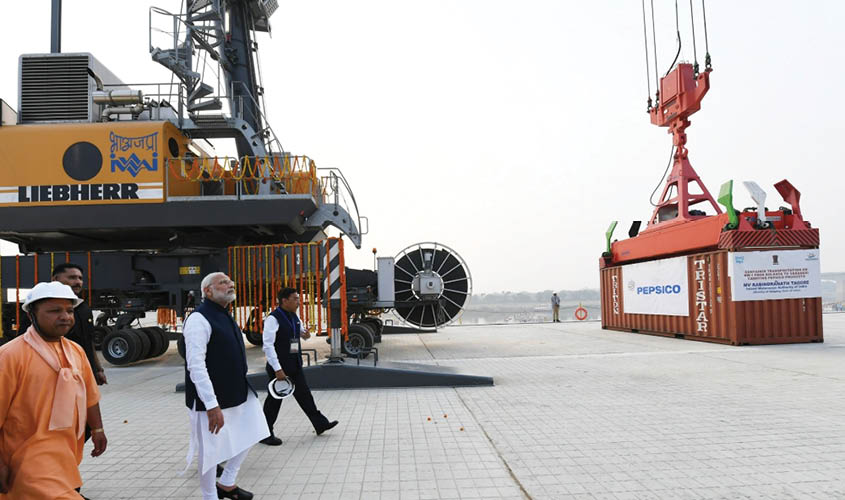New Delhi: While the Narendra Modi government’s Clean Ganga mission grabbed eyeballs in India and abroad during the Kumbh Mela, another of its key initiatives—the Jal Marg Vikas Project (JMVP)—has drawn appreciation from the world’s best. The Inland Waterway Authority of India (IWAI) was invited by the prestigious Massachusetts Institute of Technology, US, to share the success story of developing the waterway between Varanasi and Kolkata on river Ganga. The government has already started plying vessels on river Ganga on this stretch.
On 25 April, students and faculty at MIT’s School of Planning and Architecture were told the story of the implementation of the project, the challenges faced, its scope and framework, opportunities
On 12 November 2018, Prime Minister Modi had dedicated to the nation India’s first riverine multimodal terminal on Ganga at Varanasi. On the same day, he also received the country’s first container cargo, which travelled on National Waterway 1 (river Ganga) from Kolkata to Varanasi.
IWAI officials said that the opening of the waterway broke the ground for a spurt in business activities on National Waterway (NW) 1, with a slew of cargo owners like PepsiCo, Emami Agrotech, IFFCO Fertilizers, and Dabur India coming on board.
“NW1 has seen this major shift in quick time. The Union Finance Minister, in his Budget Speech for 2014-15, had announced the Jal Marg Vikas Project (JMVP). In four years, close to Rs 2,000 crore worth of work is already on ground on National Waterway 1. Of the three multimodal terminals being built on river Ganga under JMVP, the one at Varanasi is already operational and the second in Sahibganj (Jharkhand) will be ready by mid-2019,” an official said. The JMVP is being implemented for capacity augmentation of India’s National Waterway 1 on the Haldia-Varanasi stretch for a distance of 1,390 km.
NW1, along with the proposed Eastern Dedicated Freight Corridor, and NH2, constitute the Eastern Transport Corridor of India, connecting the National Capital Region (NCR) with the eastern and northeastern states and will function as a link to Bangladesh, Myanmar, Thailand, Nepal and other East and South-East Asian countries through the Kolkata port and the Indo-Bangladesh Protocol Route.

